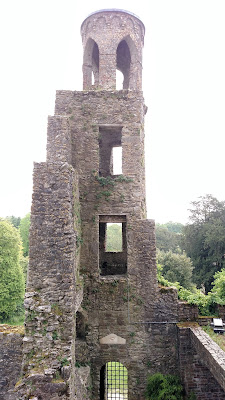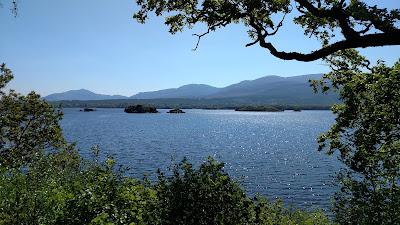Day 8 in Ireland was mostly about Cork, Blarney Castle, and geneaology.
Blarney Castle is such a tourist attraction that we didn't really want to go, but I felt oddly obligated as part of my Irish heritage.
I wonder how many humans have stepped on these stones. So worn!
The grounds were nice too.
Tough morning with shopping ahead so time for a coffee break.
We are the same family. I have not been able to trace my great great grandparents back to Ireland. One record has a man by my gg father's name in a birth registry at the Saint Mary and Saint Anne's Cathedral in Cork, so I went there.
Both were impressive and left me wondering about my ancestors.
Although it was getting late and we still had to drive to Dublin for an early flight home the next day, we made a quick pit stop to walk around the Rock of Cashel. Originally the seat of the kings of Munster, according to legend St. Patrick himself came here to convert King Aenghus to Christianity. Brian Boru was crowned High King at Cashel in 978 and made it his capital. In 1101 the site was granted to the church and Cashel swiftly rose to prominence as one of the most significant centres of ecclesiastical power in the country.
The next day, we returned out trusty rental car - no accidents were had - and boarded the long flight home. Goodbye for now, Ireland.











































%20(800x450).jpg)



.JPG)
%20(800x450).jpg)



